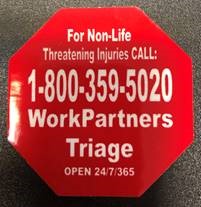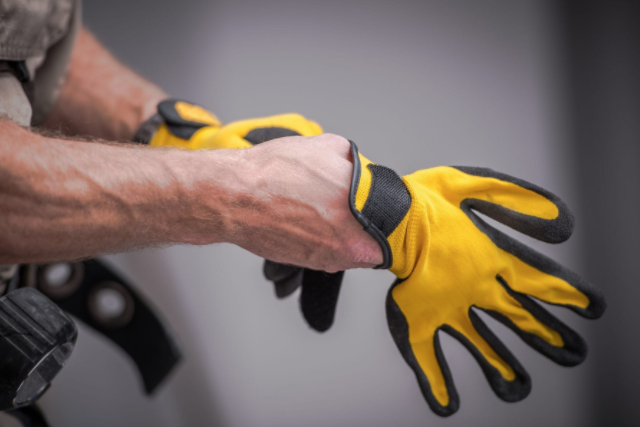HAND PROTECTION
Next to our eyes, our hands are probably the most important part of our body when it comes to doing our work. They’re involved in almost everything we do. Yet many of the things we do with our hands are done without any deliberate thought. Your hands have no fear. They’ll go anyplace they’re sent, and they only act as wisely as the person they belong to; so before you use your hands think of their safekeeping.
Here are the most common types of hand injuries and what you can do to prevent them:
Traumatic injuries often occur from careless use of machinery or tools. Hands and fingers get caught, pinched or crushed in chains, wheels, rollers, or gears. They are punctured, torn or cut by spiked or jagged tools and edges that shear or chop. Safety precautions should include using shields, guards, gloves, or safety locks; handling knives or tools with care; and keeping hands, jewelry and clothing away from moving parts.
Contact injuries result from contact with solvents, acids, cleaning solutions, flammable liquids and other substances that can cause burns or injure tissue. To protect against these injuries, read the product labels, use the right glove or barrier cream, and wash hands frequently. result from contact with solvents, acids, cleaning solutions, flammable liquids and other substances that can cause burns or injure tissue. To protect against these injuries, read the product labels, use the right glove or barrier cream, and wash hands frequently.
Repetitive motion injuries happen when tasks require repeated, rapid hand movements for long periods of time. Manufacturing, assembling, or computer work may lead to these injuries. Change your grip, hand position, or motion. If possible, rotate tasks to give your hands a rest.
Follow safe work practices and know how to use your tools properly. Inspect, maintain, and replace your tools when necessary. Always use the correct tool for the job. Ensure that blades on cutting tools are sharpened; dull cutting surfaces can cause accidents. When working with sharp tools, always know where both of your hands are at all times. Practice good housekeeping with your sharp and cutting tools by sheathing and storing them properly. Place tools far back on workbenches and shelves, not against the edge where someone walking by might get stuck.
You can protect yourself from hand injuries by remembering the following basic safety rules:
- Recognize hazards and know the correct placement for your hands to avoid injury.
- Wear Appropriate hand protection/Gloves for the task.
- Think through each job before you begin.
- Follow safety rules.
- Avoid shortcuts.
- If an accident happens, seek prompt treatment.
- Report injuries to your supervisor.
Healthy hands are built to last a lifetime. Injuries can last a lifetime, too. Be aware of your hand placement and take precautions to guard them.


